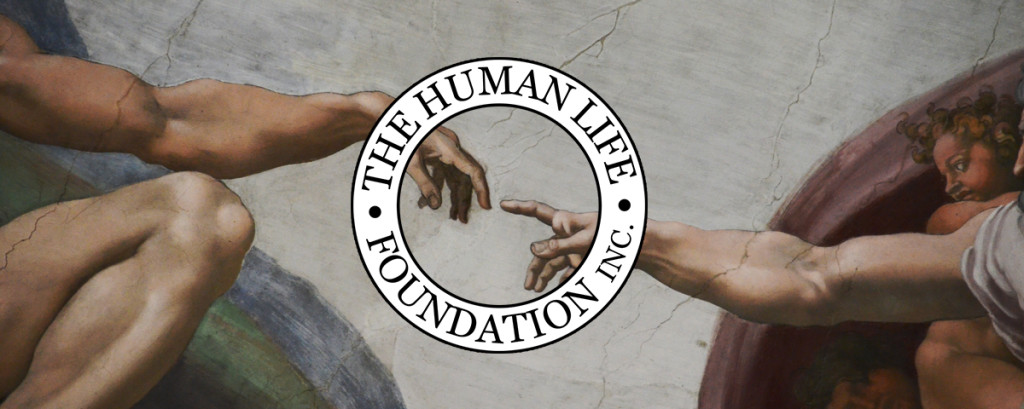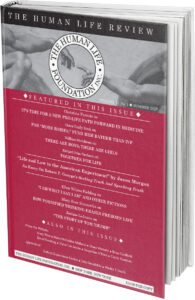No Shoes, No Recognition for the Unborn?
I recently had the opportunity to revisit the U.S. Holocaust Memorial Museum in Washington, DC. Although I had been there several times before, this time was different: I went with the scourge of abortion foremost in my mind, hoping to reflect intently on the similarities between the 20th-century killing of more than six million Jews in Europe and the killing of tens of millions of unborn children in the world today.
I have to admit that I left the museum, a few hours later, in a fairly disappointed state.
Although the exhibits were highly evocative of the horror we rightly feel at the German Nazi atrocities, and the descriptions and analysis of the 20th-century genocide were first-rate, it all seemed very remote from the contemporary plight of millions of aborted babies. Abortion is hardly centered on a nationalist, racist ideology of a humiliated people seeking glory in territorial expansion and a re-match of World War I. Nor is the rescue of the defenseless unborn associated with the wartime enthusiasm of an ultimately victorious people and their propaganda demonizing the enemy. With the abortion slaughter, we lack photos tantamount to those of the concentration camps. Nor do we have trembling, emotional oral histories of the violence—the surviving victims of abortion cannot recount what it was like to be subjected to lethal chemicals in the womb.
Even the mind-boggling number of human beings destroyed through abortion is for many of our contemporaries a merely mind-numbing, abstract statistic concerning “potential” life. The otherwise readily available evidence of flesh and blood is simply flushed out of sight in the clinics and shunned by public media.
There is, however, one exhibit in the Holocaust Memorial Museum that did generate a significant reflection on abortion for me. It is the large pile of shoes removed by concentration camp prisoners as they were ordered to undress and forced into lethal gas chambers. To walk from a darkened room postered with educational material depicting Nazi atrocities into a lit hallway bordered by a massive pile of worn, discarded shoes is a very painful experience. The viewer’s mind runs through contradictory and disturbing thoughts of the real persons who once walked in those shoes and the bland insensitivity of the pile of leather material and decaying shoelaces.
The unborn victims of abortion, however, are shoeless from the time of their conception until their brutal death. We might reflect on the bare foot of the fetus—one of the most recognizable symbols of pro-life advocacy. Meant to give concrete testimony to the humanity and tiny, defenseless size of the aborted child, it remains coldly abstract and impersonal in the form of a silver lapel pin. Moreover, a human being at the embryonic or zygotic stage is no less precious than a fetus, yet it is so young that it lacks the familiar shape of feet as well as protection from the violence of its abortion-minded mother.
To say that the unborn are shoeless is to say that we lack familiar artifacts and material reminders that could attest to their otherwise miraculous, once-glorious presence in our midst. They are, in the experience of our contemporaries, abstractions, creatures of the imagination or a dream; in the “museum” of the born world, they are, at best, fading shadows on the walls of an empty room painted in sterile white.
One way to bring the concrete reality and murder of unborn persons out of the shadows may be to ask our contemporaries to “walk in the footsteps” of these victims; that is, to take some time to really focus on what it’s like to exist barefoot. The sensation of cold linoleum floors, or the tickle of grass punctuated occasionally with unseen specks of dirt and sharp fragments of sticks, are tactile reminders of our own consciousness and humanity. No words; no expressions of ego and personality; no cerebral penetration of complex concepts; no push and pull of social ties—just the humble nakedness of one’s feet against the natural surface. Gravity . . . ground . . . life.
We might ask: Does the barefoot individual feel any less precious? Is she uncomfortable with the gritty sensations, or embarrassed by the awkward image of exposed feet? Does he feel joy in the temporary freedom from confinement by sweaty socks and shoes? Is there something odd—or profound—in the simultaneous experience of discomfort and pleasure in wiggling one’s toes?
We might also ask a more jarring question: Barefoot and alone, stimulated from the ground up, does the individual want to live . . . or die?
The inevitable answer is visceral, fundamental, and instinctual. It is an answer in which our living unborn children, humble and majestic, simple in intellect yet powerful in desire, already rejoice. With every fiber of their physical and spiritual being—with every cell that divides and every seconds-long transformation—they voicelessly shout YES, YES, YES to life!









